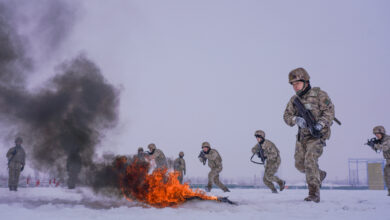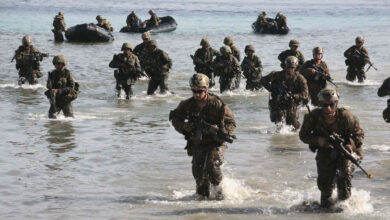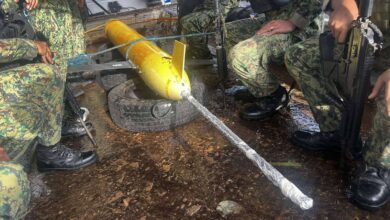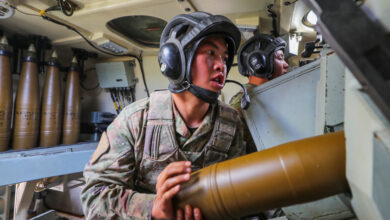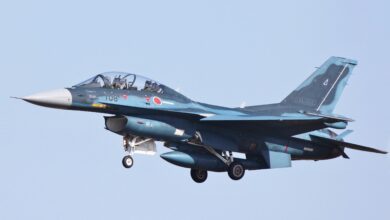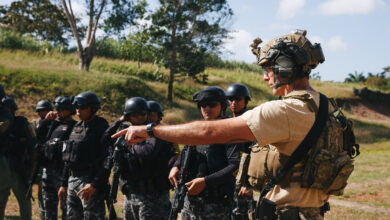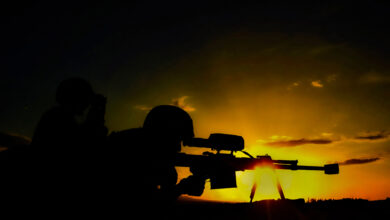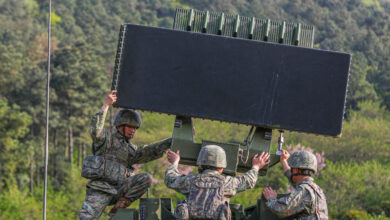PLA Warplanes Drop Thousands of Munitions in South China Sea Exercise
Several dozen JH-7 fighter bombers were used by a brigade of the PLA Southern Theater Command Naval Aviation Force.
The Chinese People’s Liberation Army (PLA) conducted a live-fire exercise in which warplanes dropped thousands of munitions at sea targets in the South China Sea, according to Chinese government-controlled Global Times.
The exercise was done to enhance combat readiness and precision strike capabilities, as the warplanes flew at low altitudes and rained down bombs and anti-ship rockets, among others, at targets floating at sea.
According to state broadcaster CCTV, several dozen JH-7 fighter bombers were used in the exercise by a brigade of the PLA Southern Theater Command Naval Aviation Force.
Several thousand rockets, cannon rounds, and aerial bombs were fired and dropped during the exercise, CCTV reported.
US Warship in South China Sea
Although the exercises were conducted days after the guided-missile destroyer USS Curtis Wilbur sailed near the Paracel Islands, Global Times reported analysts said it was not a targeted response.
Chinese military expert Song Zhongping told the state media outlet that a single US ship “has limited capability” and is not “worthy of a targeted exercise.”
The Paracel Islands, which the Chinese call “the Xisha Islands,” are located in the northwestern portion of the South China Sea. Beijing has asserted its authority over the island for more than four decades, contesting the claims of Vietnam and Taiwan.
JH-7 Fighter Bomber
The Xi’an Jian Hong-7 (Xi’an JH-7), also called the FBC-1 Flying Leopard, is a two-seat, twin-engine fighter bomber used by the People’s Liberation Army Naval Air Force (PLANAF), and the People’s Liberation Army Air Force (PLAAF) since 1992.
The Xi’an JH-7 was built to replace the PLAAF’s ageing fleet of Harbin H-5 and Nanchang Q-5 aircraft.
The aircraft has a top speed of 1,808 km/h (1123 mi/h), a range of 1,759 km (1093 mi), a length of 22m (72 ft), a wingspan of 13m (43 ft), and a cruise speed of 903 km/h (561 mi/h). It can operate day and night, and in all weather conditions.
The Xi’an JH-7 has four variants namely: JH-7A, JH-7B, FBC-1 Flying Leopard and FBC-1A Flying Leopard II. Currently, there are about 70 JH-7 aircraft operating globally.



